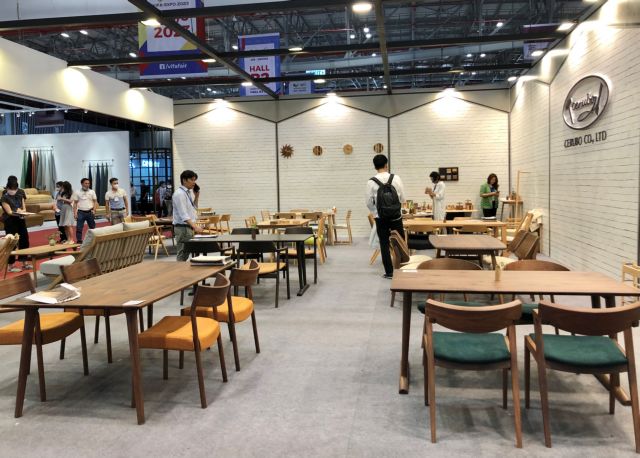 Economy
Economy

 |
| Furniture products on display at an exhibition in HCM City. The wood processing sector has worked hard to achieve digital transformation. — VNS Photo |
HCM CITY — Scansia Pacific Co., Ltd, producer of indoor and outdoor wooden furniture for export, started its digital transformation 10 years ago, Nguyễn Hoài Bảo, its vice president, said.
“The value that digital transformation brings is immense, but to get that result, it took us a long time to standardise the internal processes and then select the most suitable software solutions.
“Like other businesses, we initially sought software solutions from outside providers. But there were difficulties because the software providers did not understand much about production while production staff did not understand software.
“Finally, Scansia Pacific decided to create an in-house IT, and we have found this to be very effective. The peculiarity of manufacturing enterprises is that problems arise frequently during the production process, and thanks to the on-site team, these problems are resolved quickly.”
Now he could get reports, the dashboard and production data every minute, and know where the goods are, he said.
The biggest difficulty in digital transformation is getting the leadership's commitment since it costs a lot, not just in terms of initial investment in software and servers, but also operating costs and software upgrades, he said.
The second difficulty relates to using the software since furniture industry workers often have low to medium education, he said.
Any business that overcomes these two difficulties would succeed in going digital, he added.
Scansia Pacific is among a small number of wood processing firms that have embraced digital transformation.
Nguyễn Chánh Phương, vice chairman and secretary general of the Handicraft and Wood Industry Association of HCM City (HAWA), said: “The number of wood processing firms adopting digital transformation is not high. We are striving to scale up. There are good practices in digital transformation in the association and we strive to share those stories.”
To begin with, the association has stepped up communication to help wood processing firms to grasp the concept of digital transformation and where it should start, he said.
The association launched a CIO network development project last April to foster digital transformation in the sector, he said.
The project has completed the first step, which focused on providing professional training to personnel in charge of digital transformation at businesses, raising awareness of the importance of digital transformation, developing a CIO team, and reducing the gap between business leaders and those who perform transformational work, according to Phương.
In the second step, it will consolidate the CIO team and try to introduce specific solutions appropriate for enterprises.
“Digital transformation depends a lot on the vision and mindset of businesses, so there is no best solution or a universal solutions for all enterprises, but only right solutions for a group of companies or a certain company,” Phương said.
Bảo said "CIOs are those who both understand factories and software solutions and so can help factories customise their digital transformation."
Export orders show signs of recovery
Wood processing firms have new export orders for this month and next month.
Though not abundant as a year ago, this indicates signs of recovery, according to Phương.
Bảo said his company had orders for until early next year.
Like other companies in the sector, his company too had seen a decrease in export orders this year, he admitted.
“But we believe that this is only temporary and demand will increase again from now until the end of the year or after Tết.”
The country’s wood product exports reached US$14.8 billion last year. Phương said the exports hadbeen worth nearly $12 billion so far this year, and were expected to increase by 7-8 per cent for the entire year. — VNS




